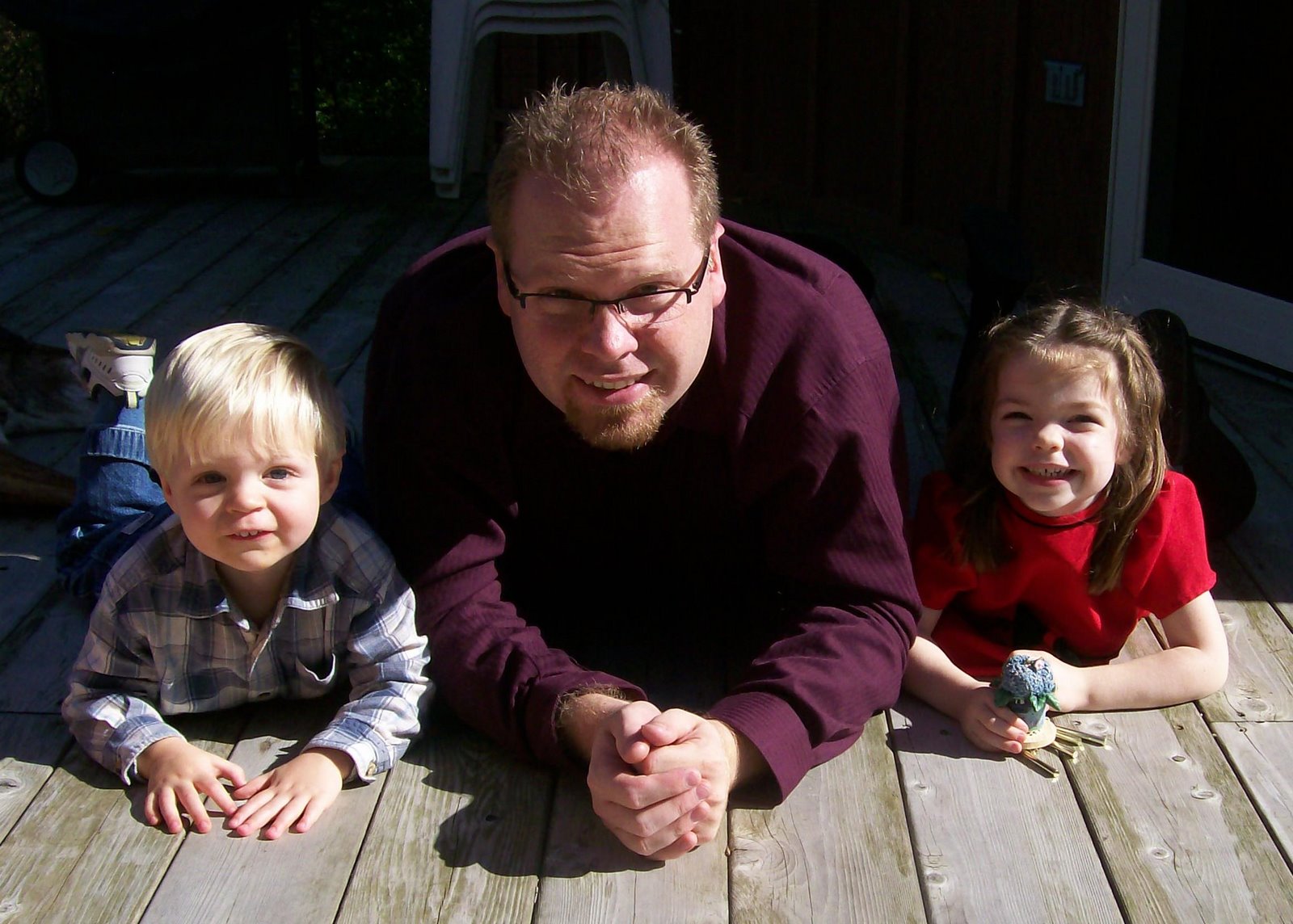 In January of 2007, I was part of a decision to close a church plant, CentrePointe, in Kentwood, MI. This "coffeehouse in a warehouse" church was the best faith community I have ever been a part of. It was creative, experimental, talented, had a heart for lost and unusual and "discarded" people, and was a safe place for smart people to explore spirituality on their own terms at their own pace. We would call off worship quarterly just to serve in the community on Sunday mornings. The worship was often gripping, and we did not shy away from difficult topics. For 5 years, I led the worship design team, a team of teams which brainstormed the worship service every week from Tuesday to Sunday - and along the way we designed some very unusual, compelling worship experiences. Many church planters got their feet wet at CentrePointe, and we can point to 17 families that are now on staff at churches or church plants who spent time in ministry at CentrePointe.
In January of 2007, I was part of a decision to close a church plant, CentrePointe, in Kentwood, MI. This "coffeehouse in a warehouse" church was the best faith community I have ever been a part of. It was creative, experimental, talented, had a heart for lost and unusual and "discarded" people, and was a safe place for smart people to explore spirituality on their own terms at their own pace. We would call off worship quarterly just to serve in the community on Sunday mornings. The worship was often gripping, and we did not shy away from difficult topics. For 5 years, I led the worship design team, a team of teams which brainstormed the worship service every week from Tuesday to Sunday - and along the way we designed some very unusual, compelling worship experiences. Many church planters got their feet wet at CentrePointe, and we can point to 17 families that are now on staff at churches or church plants who spent time in ministry at CentrePointe.For many reasons, not the least of which was financial, we felt called to close our doors. We were without a pastor for the third time in our 11-year history, some key leaders and givers had moved away, our strip mall lease had escalated beyond our shrinking means, there was a tragic divorce between two key leaders, and a number of other leaders were on the verge of resigning because they were plain tuckered out. Some onlookers in our denomination felt it was about time the "black sheep" church wrap up its crazy experiment, yet others felt we were the best thing going and were more apt to say, "How dare you shut it down!" We prayerfully decided to give all of our stuff and people to another denominational church plant that appeared to have similar values to our own. This was hardest on people who had come to faith at CentrePointe, and who couldn't fathom being part of another faith community. Not everyone has stuck it out at the new place, but many have.
 Last week I received a request from Eileen Crowley, editor of Liturgy Magazine, to use an image from a CentrePointe worship service in her publication. This was a service we designed around the song "Bring Me to Life" by Evanescence. The text we used was the story of the 4 guys who brought their paralyzed friend to life by busting through a roof and lowering him into the presence of Jesus. We suspended a mat in the space and had modern-day construction debris strewn about and as centerpieces on the cafe tables. The band rocked the song to within inches of the radio version. We were challenged to go out and that week thank the people in our lives who "brought us to life" by modeling Jesus or introducing us to Jesus. Then we were challenged to think of whose mat are we currently carrying. Who has God placed in our lives, that like the 4 friends, we had to do whatever it took to bring into the presence of Jesus? We each got a small length of rope to remind us to pray for this person and be with this person. I had mine on my dashboard for over a year.
Last week I received a request from Eileen Crowley, editor of Liturgy Magazine, to use an image from a CentrePointe worship service in her publication. This was a service we designed around the song "Bring Me to Life" by Evanescence. The text we used was the story of the 4 guys who brought their paralyzed friend to life by busting through a roof and lowering him into the presence of Jesus. We suspended a mat in the space and had modern-day construction debris strewn about and as centerpieces on the cafe tables. The band rocked the song to within inches of the radio version. We were challenged to go out and that week thank the people in our lives who "brought us to life" by modeling Jesus or introducing us to Jesus. Then we were challenged to think of whose mat are we currently carrying. Who has God placed in our lives, that like the 4 friends, we had to do whatever it took to bring into the presence of Jesus? We each got a small length of rope to remind us to pray for this person and be with this person. I had mine on my dashboard for over a year.So, thanks, Eileen! We're glad CentrePointe can live on through your magazine. It was cathartic for me to see something we did 5 years ago live on in this small way.


